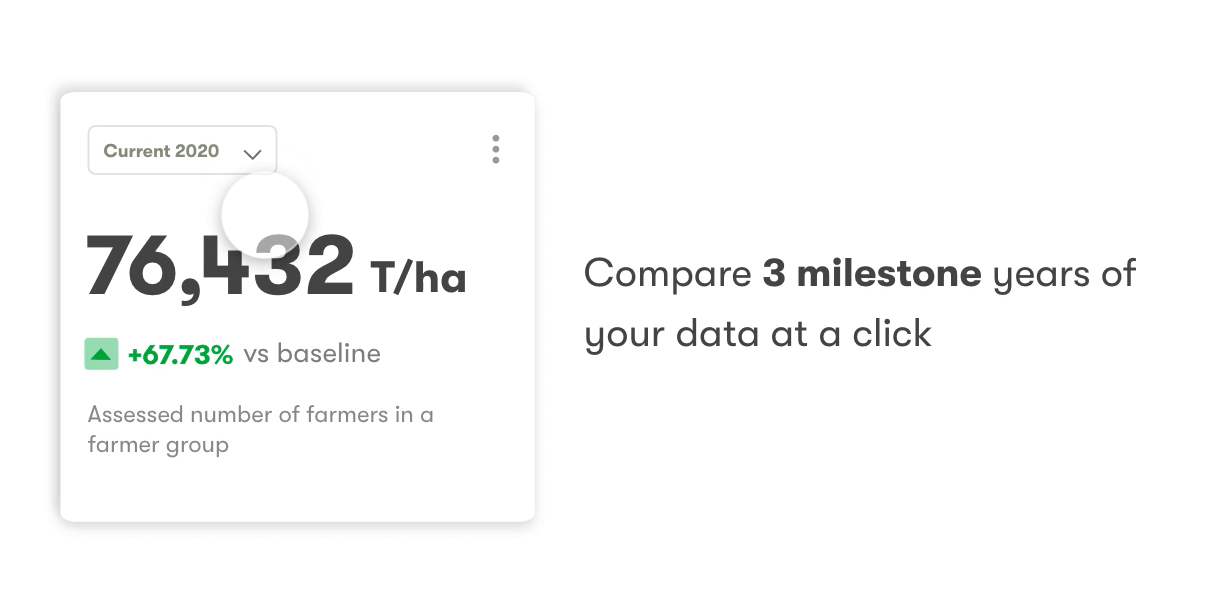DOES YOUR SUSTAINABILITY REPORTING START AT THE SOURCE?
Sustainability reporting requires a lot of work, and it's only going to get more difficult over time as communities expect more from businesses and businesses demand more from themselves. That's where AtSource comes in, and why it's always getting better. AtSource CEO Roel Van Poppel explains…
The sustainability challenges facing our world and the efforts to meet them are immense. A variety of entities monitor and rate the activities of large businesses, including those in the food and agri-business industries. In fact, because their supply chains touch the farthest, most remote, and often the poorest communities on the planet, much is expected from them concerning how their operations impact and improve health, environmental, financial, and social well-being.
Sustainability executives, as well as marketers and people working in procurement and across the supply chain, are tasked with meeting these reporting requirements and they face an equally immense challenge. A rough count suggests that companies are required to answer detailed and nuanced questions about environmental, social governance (" ESG") questions that go well into the 100s. These are put forward by customers, NGOs, issue-specific interest groups, financial ratings agencies, intergovernmental organisations, and local and national governments. Therefore, the data required is broad, deep, and diverse, as are growing expectations not just for details on investment and effort, but proof of outcomes and overall impact on environmental and social issues.
Olam designed our insights platform AtSource so that customers buying say, cocoa or cashew or coffee from Olam Food Ingredients (OFI) or rice from Olam Global Agri (OGA) have a single ‘ESG view’ across the entire supply chain.
The platform offers a complete array of information useful to reporting and ongoing management decision making. With ‘end to end’ metrics, it draws on data that:
- Has been vetted for accuracy
- Matches it to key reporting categories under the UN SDGs
- Provides outputs that can be repurposed in other communications
- Yields insights into outcomes and not just investments, and
- Provides customers with actionable ideas for taking subsequent action (in fact, we are already engaged on delivering such projects with our customers and partners).
Five core qualities enable AtSource to support the toughest reporting expectations:
"First Mile" data -- We employee thousands of on-the-ground reporters, called "enumerators," who physically visit farms from nearby to remote and record their reporting data, so it's direct and verified at the points of origin. It's also very concrete and detailed; for instance, we can measure the number of shade trees distributed and premiums paid.
Focused on key issues -- Our proprietary algorithms crunch diverse streams of data and apply them against 9 reporting areas of most interest to sustainability reports, along with the UN’s 12 SDGs, so customers can find and use the data of most interest. With more than 150 indicators tailored to specific supply chain situations, users can focus on indicators that extend from child labor and remediation monitoring, to the specifics of food security in a given farming community.
A flexible lens -- In addition to this macro organisation, AtSource provides flexible levels of footprint detail so data can be viewed at a high level or drilled down all the way to the details of specific farmer groups and Olam-owned estates. For instance, its eco-calculator enables sustainability executives to complete their Scope 3 emissions analyses, which can be a singularly daunting challenge.
Vetted...again -- While our data from third-parties comes vetted for accuracy, our monitoring team reviews the data to reaffirm and reconfirm that it conforms to context, so exceptions such as dramatic year-over-year changes are scrutinised to ensure they're accurate.
Actionable -- We provide insights into programmes and resources available to customers interested in taking additional actions on particular issues, crops, and/or geographic areas, so reporting isn't only a snapshot of conditions but a mechanism for changing them.
This last point is particularly important: From first mile data collection to actionable tools, AtSource was designed to evolve over time by capturing data from Olam’s supply chains and providing tools so that Olam teams, with the customer, can improve the situation on ground. Through AtSource the sustainability executive can then track the progress and drop the impact narratives curated by the Olam teams into annual reports, or other marketing materials, with confidence that the data is accurate and relevant.
The expectations for reporting are only going to become greater and likely get more detailed in this last Decade of Action before the 2030 SDGs deadline. Our updating "virtuous circle" of feedback means that AtSource is positioned to support sustainability reporting needs today and help lead those requirements in the future.
